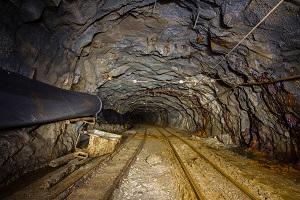As the sun sets in northern México, less than 100 kilometres from its border with the United States, news from the latest coal mining disaster near Sabinas, in the state of Coahuila, is heartbreaking for the families awaiting at the surface. Military divers who have bravely attempted to make their way through a mine filled with murky water could not penetrate the collapsed entryway to gain access to the 10 miners that remained trapped. Like prior attempts, their mission to rescue the men who remain in the mine was not successful. As time passes, the miners’ families who hope and pray for a rescue, endure the agonizing feelings of despair and helplessness as rescue seems less likely. Here, like in many parts of the world, there is never a guarantee of safety for underground coal miners.
The mines that dot the State of Coahuila operate under a constant threat of roof collapse, water flooding, and methane explosions. The coalfields of the Sabinas basin have been mined since 1884 and 95% of México’s coal is found in this steel producing region. Mining disasters occur here with frightening regularity -- the worst in recent history happened in 2006 in Concho de Pasta coal mine, located less than 15km to the north of Sabinas. A large methane explosion was strong enough to destroy underground roadways and block the recovery of the bodies of 63 miners that remained in the partially collapsed mine.
Mine safety is something that UNECE member States take seriously. Many have robust mine safety laws. Ray Pilcher, Chair of the UNECE Group of Experts on Coal Mine Methane and Just Transition observed “Because coal would not be produced if it were not for our society of consumers who still depend on coal for energy, steelmaking, and other chemical processes, dangers to miners and the environment are a responsibility that each of us share. We need to support efforts that reduce the need for coal and find alternate ways to generate energy and make steel and cement in clean and sustainable ways. Society must support families and communities when there are accidents and when coal mines are closed as our world takes a path toward a decarbonized future. We must work for a Just Transition for All and not just a transition.”
As societies grapple with political issues related to determining how a decarbonized future might take shape, tools are available which help design a circular economy in which energy use is reduced, less waste produced, and equity and justice in our communities prevail.
UNECE Guidelines on the recovery and capture of methane in active and abandoned mines provide best practices to protect miners and reduce emissions of methane to the atmosphere. Methane is a short-lived climate pollutant with the average global warming potential that is 86 times more potent than carbon dioxide during its residency time in the upper atmosphere. It is the enemy of coal miners that combat the danger of explosion by using methods to remove it from the mine and vent it to the atmosphere.
In addition, the United Nations Framework Classification for Resources (UNFC) and the United Nations Resource Management System (UNRMS) under development at UNECE, incorporating the sustainable development principles of society, environment, and economy, can be applied in a way that assists all UN Member States in their deliberations related to determining which energy resources should be mined and which should remain in the ground.
Further, UNRMS lays out principles which provide guidance for assessment of risks associated with mineral extraction and use in way that explicitly evaluates the potential resource through an analytical process allowing the private sector and governments to weigh the impact of resource development on the environment and community. Viewed in this way the socio-economic consequences of developing a deposit for mining does not ignore the value of the people that dedicate their lives to providing the rest of us with energy and valuable products for everyday living. This is alternative to the linear commodity thinking and helps us along the path to a sustainable future.


